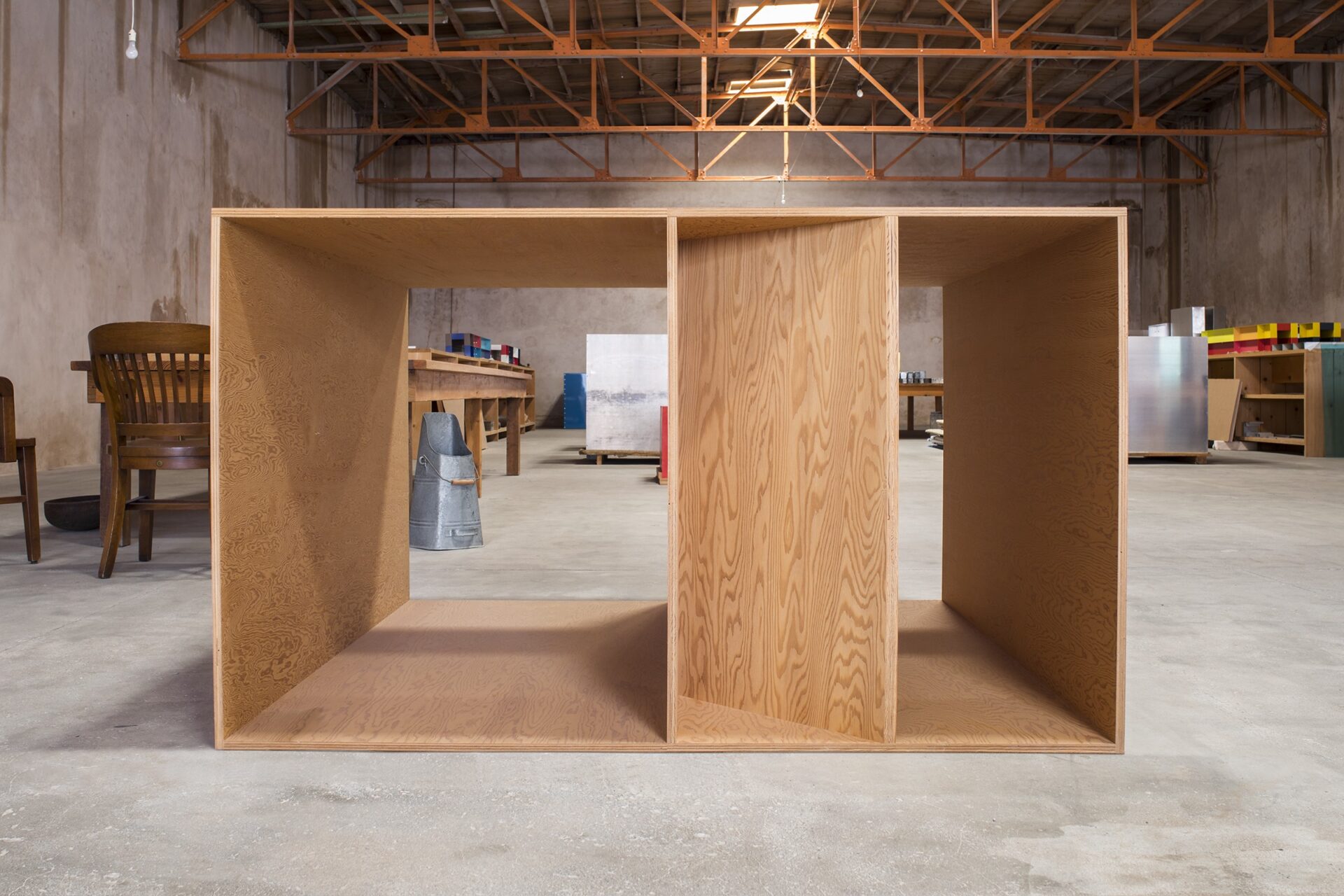Donald Judd’s first use of unpainted plywood, a material that expanded the range of possibilities for scale and surface in his work, dates to 1972. As Judd wrote in 1990, “We go to a great deal of trouble to get a certain kind of plywood and the details of the construction are so unusual that the carpentry has become unique.”1
In a 1987 interview, Judd said, “A lot of the materials were selected—the metal, the galvanized iron, for example, and plywood too before the galvanized iron—for their lightness and ability to define a volume without being massive. Then I could make a fairly large thing that was still light because I wanted to get away from the idea of weight and mass. I was more interested in volume.”2 Judd used the dimensions of this piece in works dating from the early 1970s.
This work was exhibited in Donald Judd: New Sculpture at Margo Leavin Gallery, Los Angeles (November 18–December 30, 1989).
